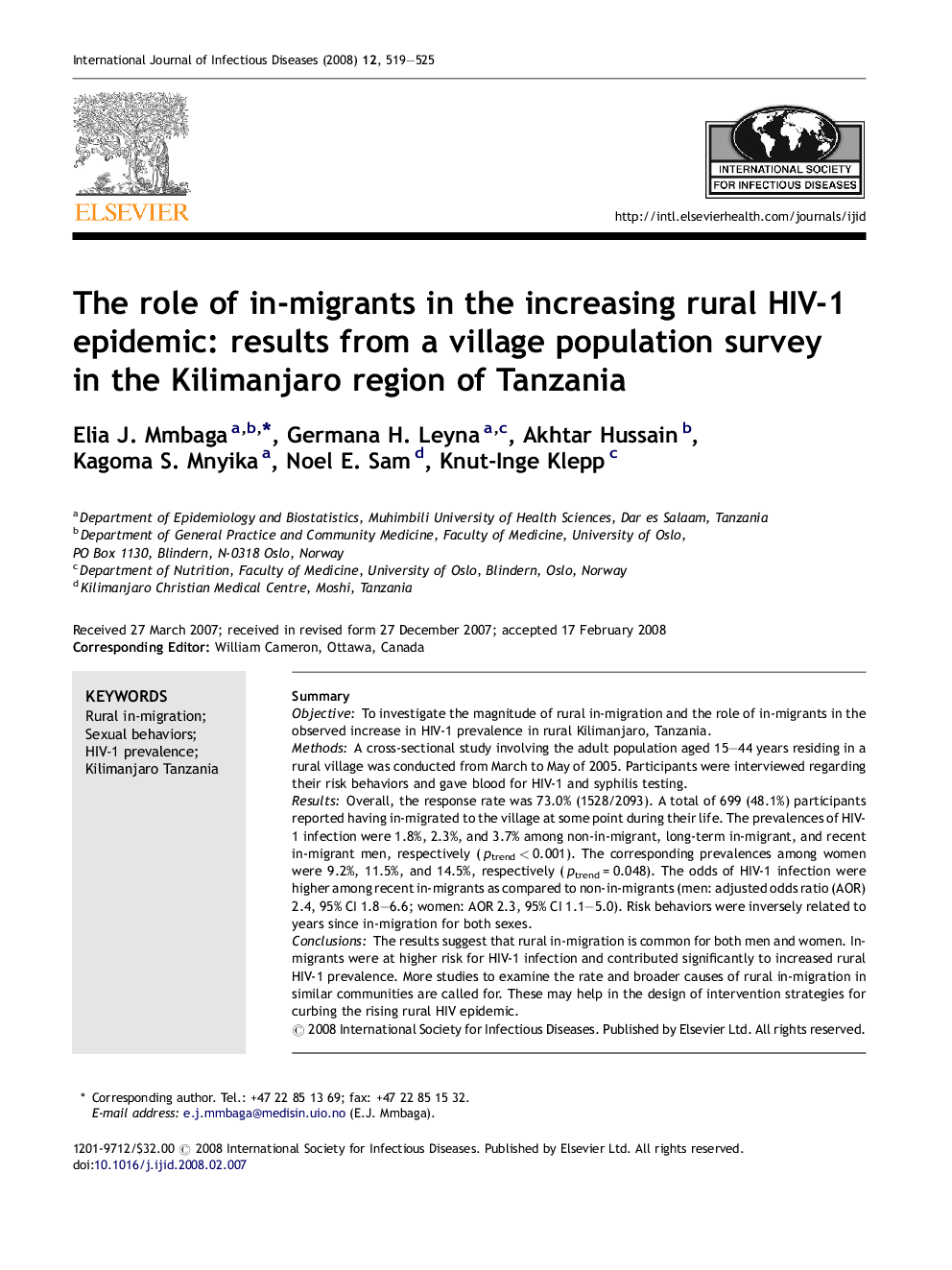| Article ID | Journal | Published Year | Pages | File Type |
|---|---|---|---|---|
| 3364592 | International Journal of Infectious Diseases | 2008 | 7 Pages |
SummaryObjectiveTo investigate the magnitude of rural in-migration and the role of in-migrants in the observed increase in HIV-1 prevalence in rural Kilimanjaro, Tanzania.MethodsA cross-sectional study involving the adult population aged 15–44 years residing in a rural village was conducted from March to May of 2005. Participants were interviewed regarding their risk behaviors and gave blood for HIV-1 and syphilis testing.ResultsOverall, the response rate was 73.0% (1528/2093). A total of 699 (48.1%) participants reported having in-migrated to the village at some point during their life. The prevalences of HIV-1 infection were 1.8%, 2.3%, and 3.7% among non-in-migrant, long-term in-migrant, and recent in-migrant men, respectively (ptrend < 0.001). The corresponding prevalences among women were 9.2%, 11.5%, and 14.5%, respectively (ptrend = 0.048). The odds of HIV-1 infection were higher among recent in-migrants as compared to non-in-migrants (men: adjusted odds ratio (AOR) 2.4, 95% CI 1.8–6.6; women: AOR 2.3, 95% CI 1.1–5.0). Risk behaviors were inversely related to years since in-migration for both sexes.ConclusionsThe results suggest that rural in-migration is common for both men and women. In-migrants were at higher risk for HIV-1 infection and contributed significantly to increased rural HIV-1 prevalence. More studies to examine the rate and broader causes of rural in-migration in similar communities are called for. These may help in the design of intervention strategies for curbing the rising rural HIV epidemic.
